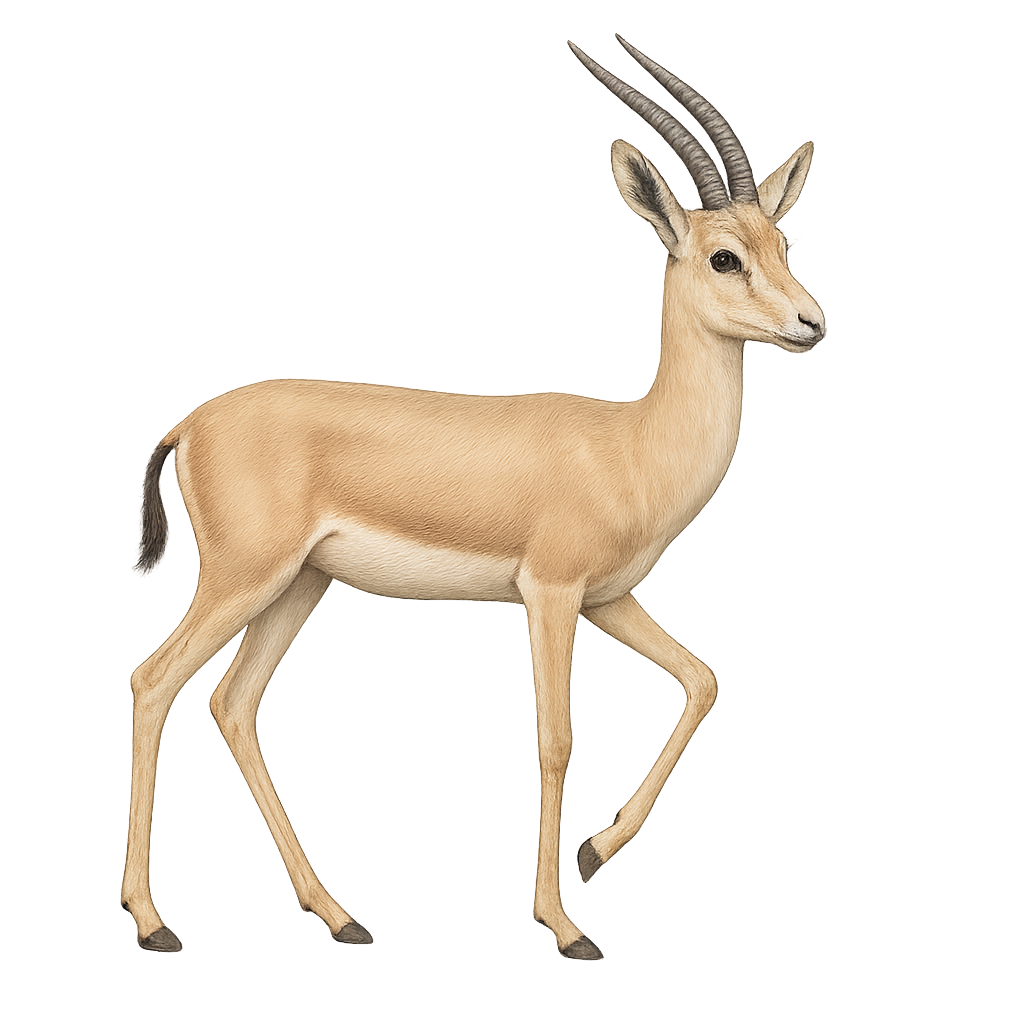Your wildlife photography guide.
Explore the slender-horned gazelle in detail, study its behavior, prepare your shots.
Where to observe and photograph the slender-horned gazelle in the wild
Learn where and when to spot the slender-horned gazelle in the wild, how to identify the species based on distinctive features, and what natural environments it inhabits. The WildlifePhotographer app offers tailored photography tips that reflect the slender-horned gazelle’s behavior, helping you capture better wildlife images. Explore the full species profile for key information including description, habitat, active periods, and approach techniques.
Slender-horned gazelle
Scientific name: Gazella leptoceros

IUCN Status: Critically Endangered
Family: BOVIDAE
Group: Mammals
Sensitivity to human approach: Very shy
Minimum approach distance: 50 m
Rut period: September to October
Gestation: 165-180 jours
Births: February to April
Habitat:
Deserts, sand dunes, arid steppes
Activity period :
Mainly active at night, generally discreet during the day.
Identification and description:
The slender-horned gazelle, or Gazella leptoceros, is a species of gazelle that primarily inhabits the desert regions of the Sahara. It is recognizable by its slender, elongated horns, which can reach up to 40 cm in length. Its coat is pale, almost white, allowing it to blend into the sandy dunes. This gazelle is well adapted to its arid environment, capable of surviving with very little water, feeding mainly on leaves, shoots, and fruits. Unfortunately, it is critically endangered due to excessive hunting and habitat degradation.
Recommended lens:
400 mm – adjust based on distance, desired framing (portrait or habitat), and approach conditions.
Photography tips:
To photograph the slender-horned gazelle, it is advisable to use a telephoto lens of at least 400mm to capture sharp images from a distance. Given the shy nature of this animal, it is best to remain discreet and blend into the environment to avoid startling it. The best times for photography are early morning or late afternoon when the light is soft and the gazelle's activity is more likely. Use a tripod to stabilize your camera and be patient to capture exceptional shots.
From knowledge to field practice
A species profile helps you understand an animal. In the field, the challenge is often different. Remembering your own observations.
The WildlifePhotographer app allows you to:
• record your personal observations
• note locations, dates, and behaviors
• revisit your field references over time
• build a private and long-term field logbook
The app does not provide observation locations.
It helps you organize what you actually observe, with respect for wildlife.

